-
Car Reviews
- All reviews
- Midsize SUVs
- Small cars
- Utes
- Small SUVs
- Large SUVs
- Large cars
- Sports SUVs
- Sports cars
- Vans
Latest reviews
- Car News
-
Car Comparisons
Latest comparisons
- Chasing Deals
Skoda is keeping skin in the large-car game with a new-generation Superb – and in many ways it lives up to its immodest badge
The large car still isn’t completely dead yet — at least if you have upwards of $65 grand available to fork out.
Skoda is one of the few brands keeping faith with the dying segment, continuing its presence with a new, fourth-generation Superb — again available as either a liftback sedan or wagon.
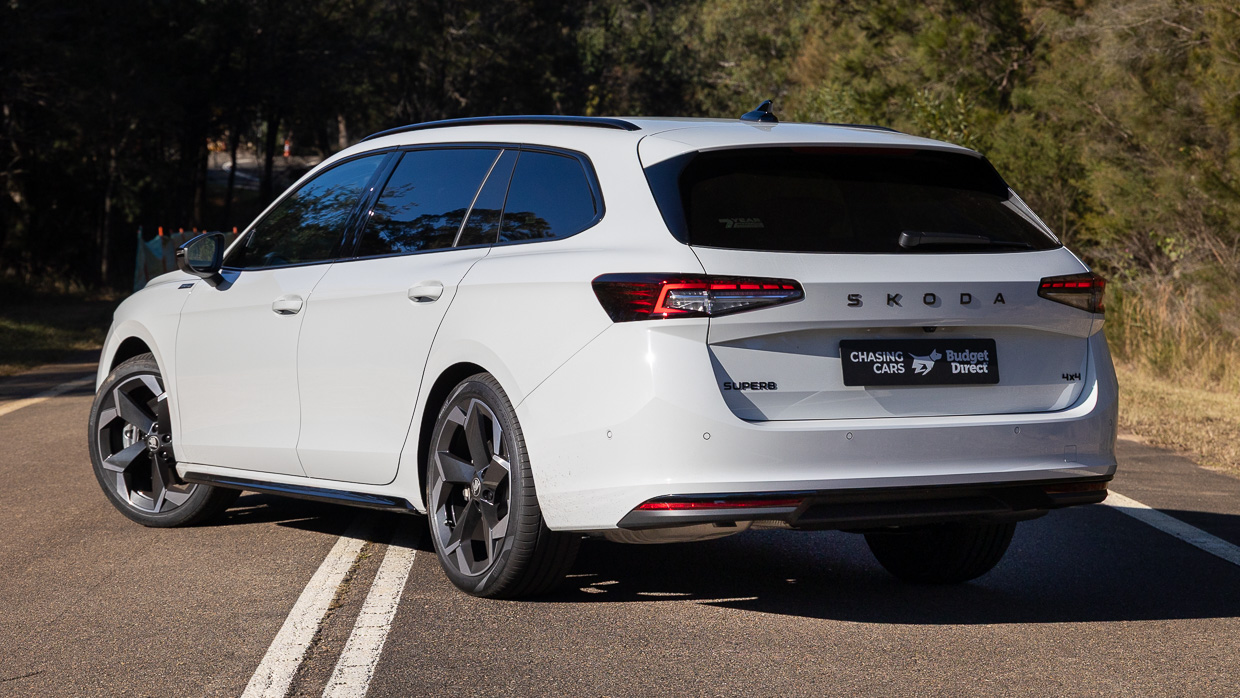
Families and executives aren’t its only customer targets; the Czech brand is also pitching its flagship model at police forces who have long been forced out of their staple Falcons and Commodores.
The reality of sales expectations, however, is revealed with the repeat of a single-spec Superb Sportline.
The Superb large sedan has just two main rivals in size/price in the form of the Honda Accord and entry-level Lexus ES; other considerations for the price could include smaller (midsize) luxury sedans such as the Genesis G70 and Volvo S60.
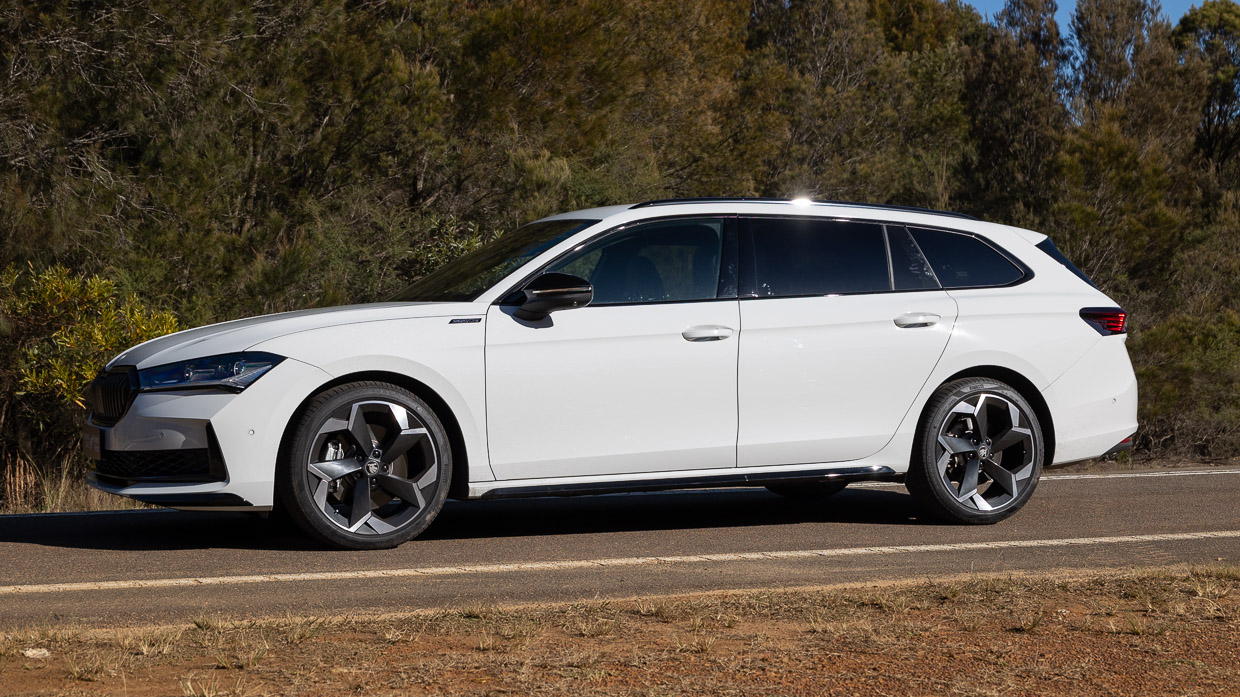
Large wagons are even rarer, though; the Superb estate’s biggest rivals are high-spec midsized SUVs, and you could also include Skoda’s own seven-seater SUV, the Kodiaq.
Our review focuses on the Superb wagon, which we drove away from the media launch to bring you a full road test based on multiple days of testing.
The new Superb sits at the crossover point of the under/over $70K mark, priced from $67,990 before on-road costs for the liftback sedan and from $69,690 for the wagon.
That corresponds to (Sydney) driveaway pricing of $73,990 and $74,990, respectively, for the sedan and wagon.
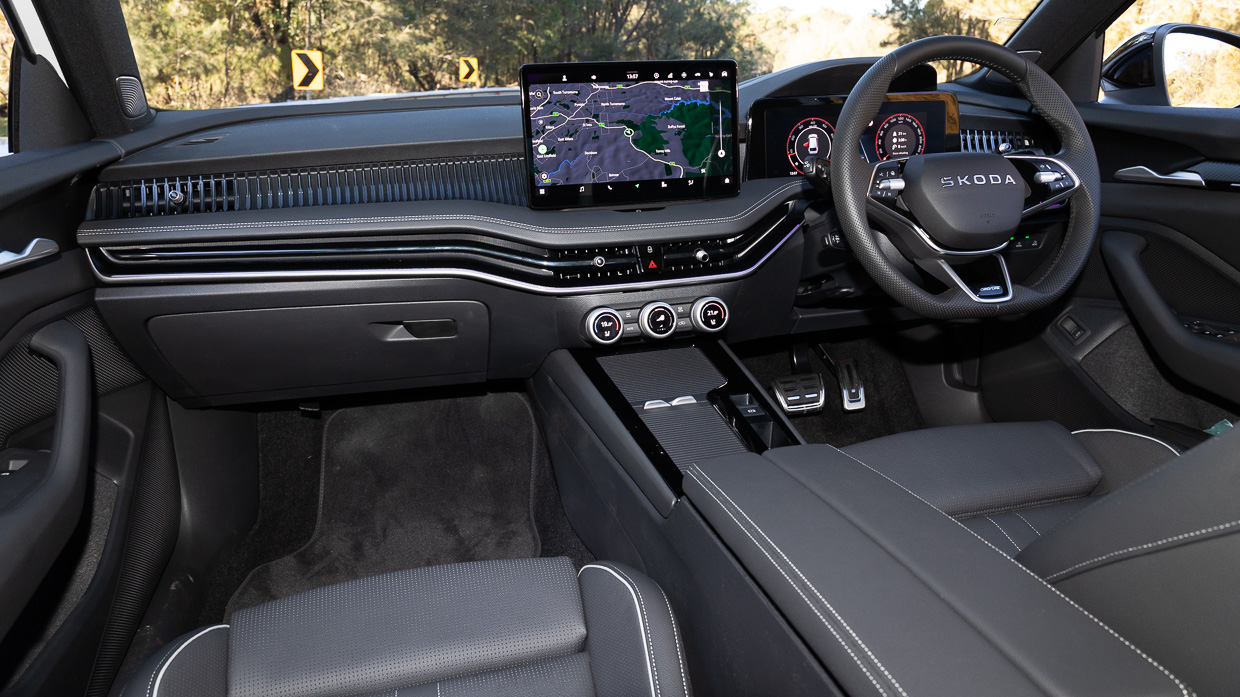
The RRP is an increase of $2400 over the previous model, though Skoda says the new Superb adds standard features with a value it places at $8500.
New features include front seats with heating, ventilation and massage functions; head-up display; regular metallic paint is now standard; and expanded driver-assist systems include vehicle-exit warning, emergency steering assist, traffic-sign recognition, and Travel Assist semi-autonomous steering.
Other notable inclusions are adaptive dampers, 19-inch alloy wheels, ‘Matrix’ LED adaptive headlights, 13.0-inch infotainment touchscreen, 10.0-inch digital driver cluster, heated steering wheel, dual-level customisable LED interior lighting, tri-zone climate control, wireless smartphone connectivity, and a 12-speaker Canton audio system.
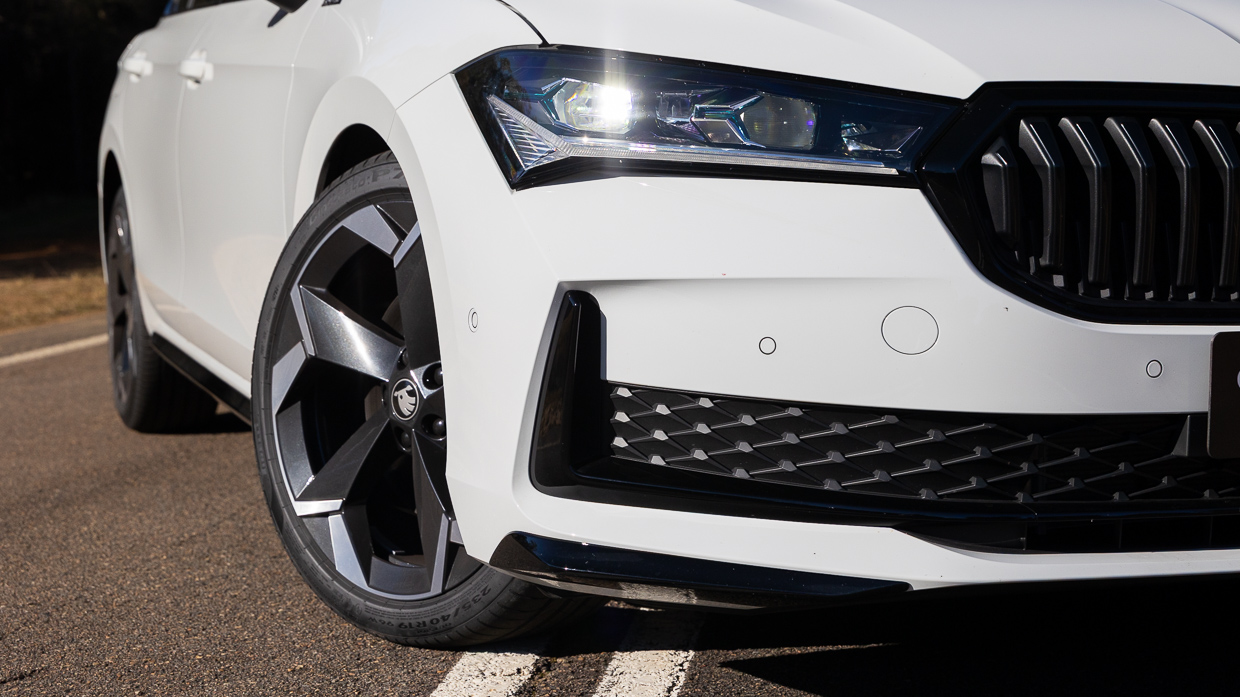
The main options are a $1900 panoramic sunroof and ‘premium’ Carmine Red paint that costs $770.
You are also getting even more metal for the money now, as the Superb has stretched 43mm to 4.9 metres in length.
The Superb is again offered in Sportline trim only, which brings various gloss-black finishes to exterior elements including the grille, mirror caps and, for the wagon, roof rails.
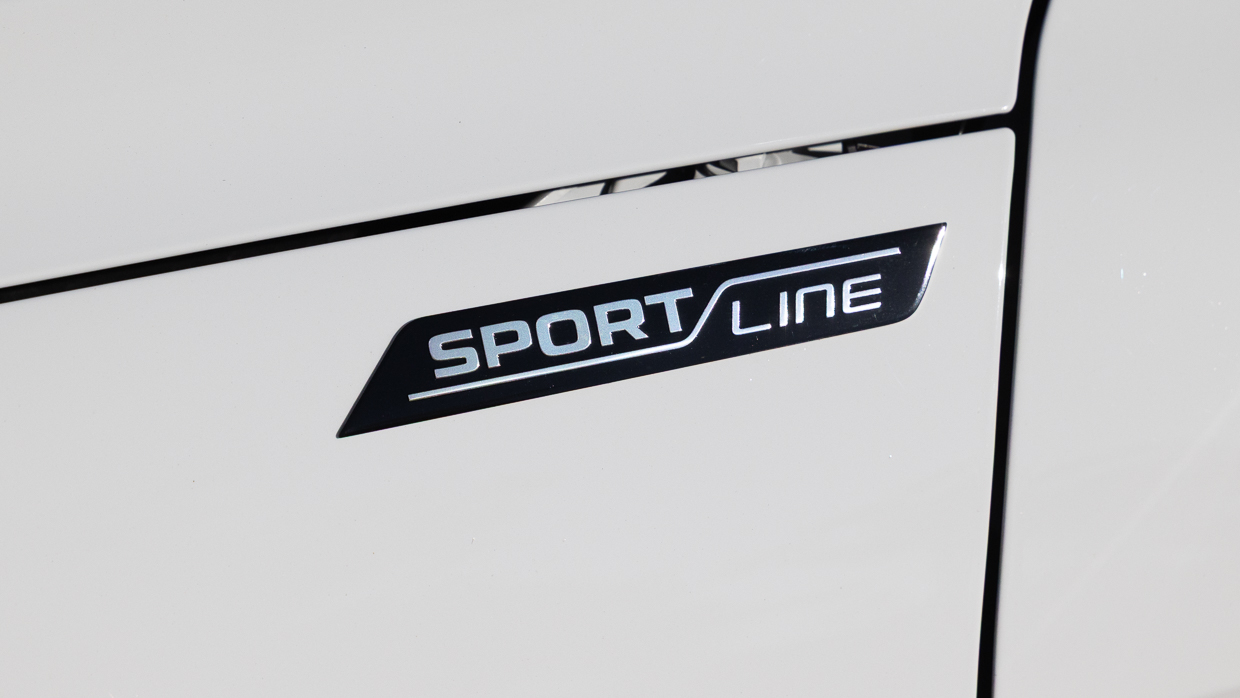
Although a Honda Accord e:HEV RS sedan is priced lower at $64,990, a standard panoramic roof is its only main equipment advantage where the Superb sedan counters with more features, a temp spare wheel, and a longer warranty.
A Lexus ES base model is similarly priced ($74,160) to the Skoda yet the Superb is equipped more like the range-topping ES Sports Luxury that’s about $89,500 driveaway.
The Superb’s refreshed interior shares plenty of design elements with both the Kodiaq SUV and facelifted Octavia, though it also goes its own way in some areas — including an upper-dash design that seemingly mimics Skoda’s multi-bar ‘moustache’ grille and cleverly integrates the side vents.
As with the recently launched Kodiaq, the transmission selector is now a stalk behind the wheel rather than a conventional gearlever.
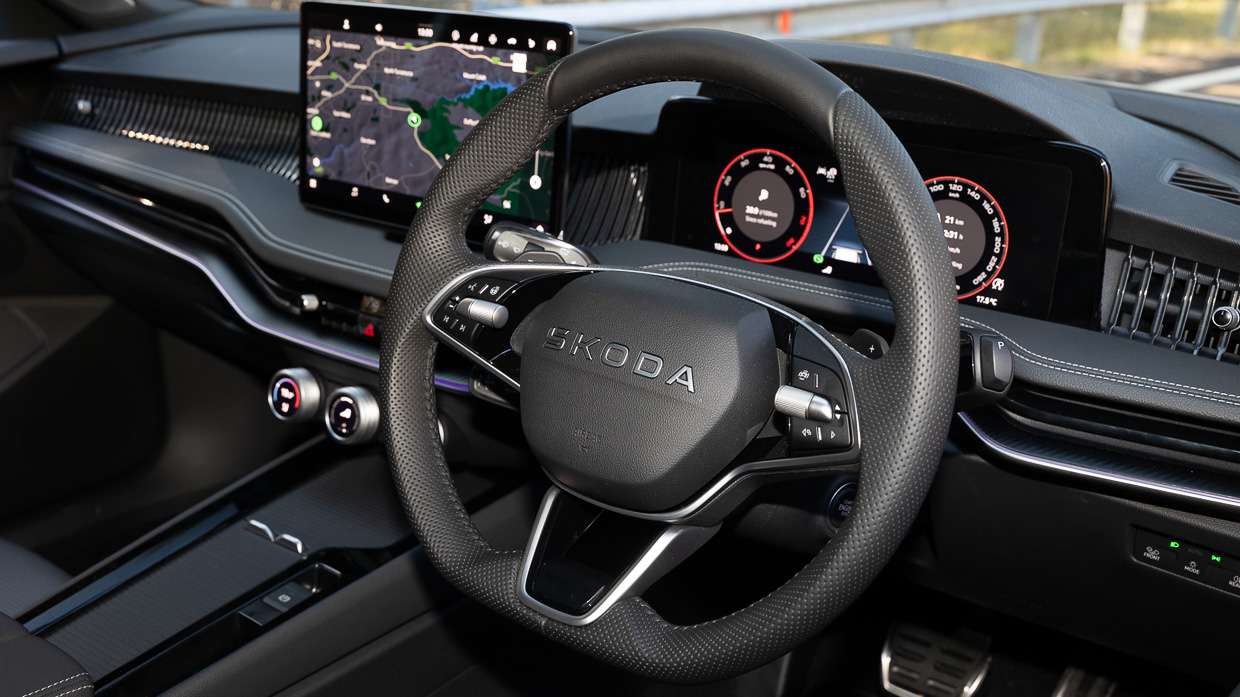
This frees up space for a more practical centre console. The front section features dual, opposite opening lids that access a smartphone (cooled) fast-charging tray and cupholders; the ‘jumbo box’ cubby is quoted with a 5.5-litre capacity and includes a 12-volt socket plus a clip-on tray and moveable lengthwise storage for small items such as Skoda’s touchscreen cleaner block.
These are just the first examples of an abundance of thoughtful little touches found in the Superb. As per Skoda tradition, an umbrella is secreted into the side of the driver’s door.
The generously sized door pockets also take thick drinks bottles.
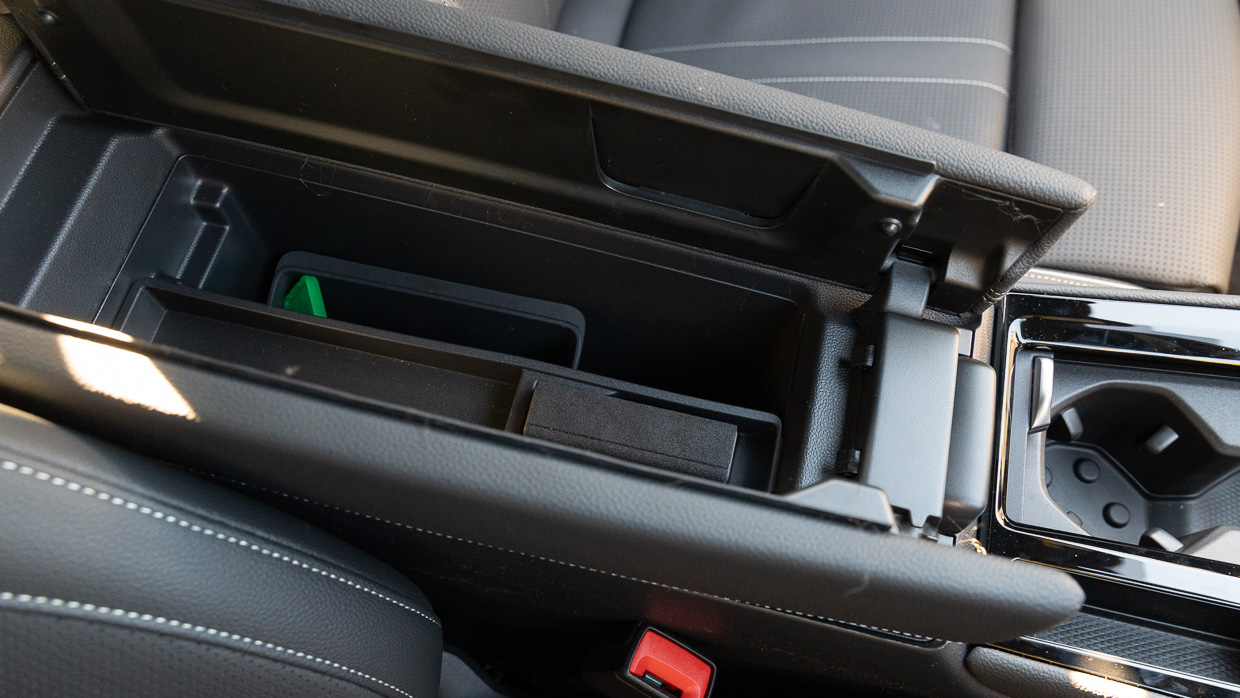
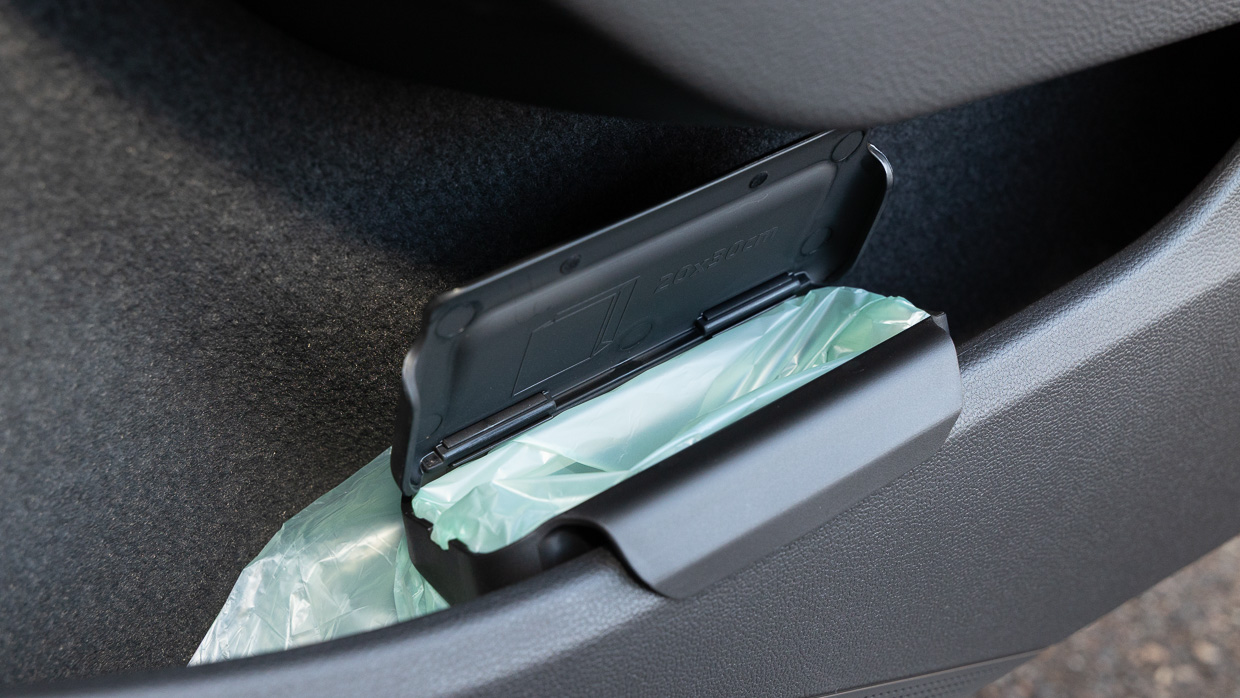
A head-up display is a first for the Superb, complementing a vastly improved infotainment system that brings not only a larger screen (13 inches v previous 9.2in display) but also better graphics, better clarity, and a generally more intuitive interface.
The standard Canton audio provides excellent sound (and superior to that of the Bose system in our long-term Hyundai Santa Fe Calligraphy).
A digital driver’s cluster is fully configurable via two buttons on the right side of the steering wheel, including the option for full-screen navigation (though factory nav only).
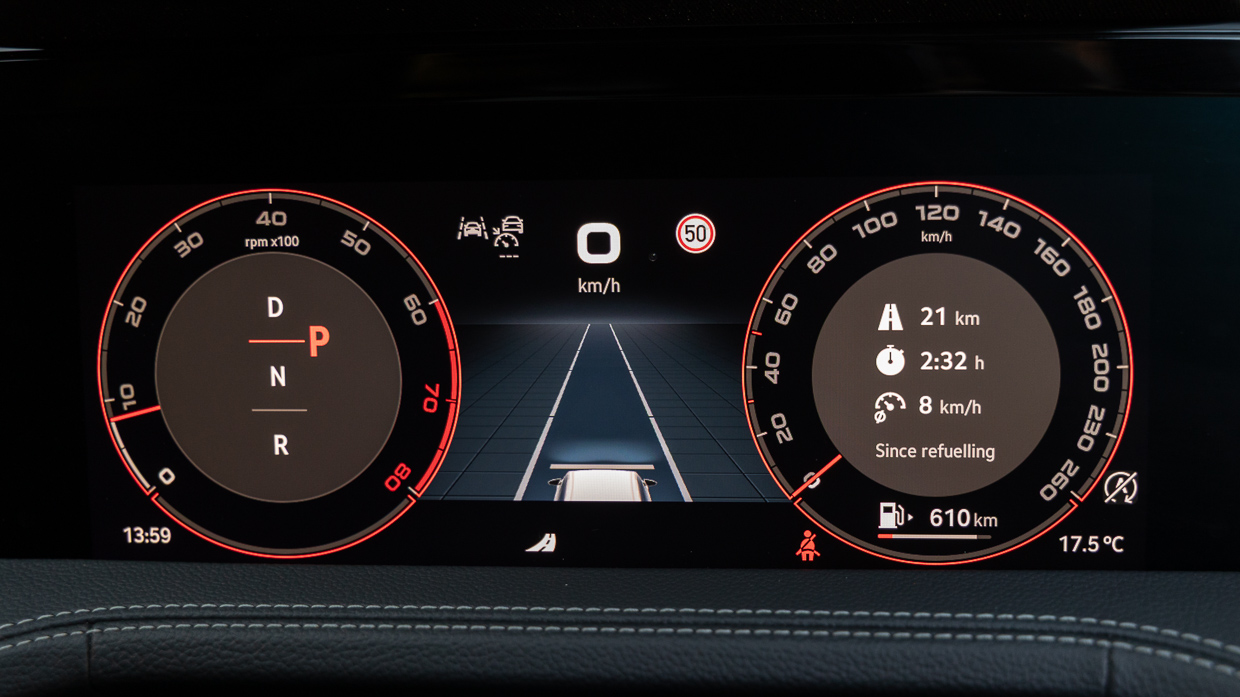
The Superb shares an excellent innovation with the Kodiaq — the ‘Smart dials’ that sit on the lower-middle dash and comprise three physical dials with digital displays.
The outer dials are dedicated to cabin temperature and seat heating/cooling; the middle dial can be configured to include multiple functions including driving modes, fan control, volume control, and even map scrolling.
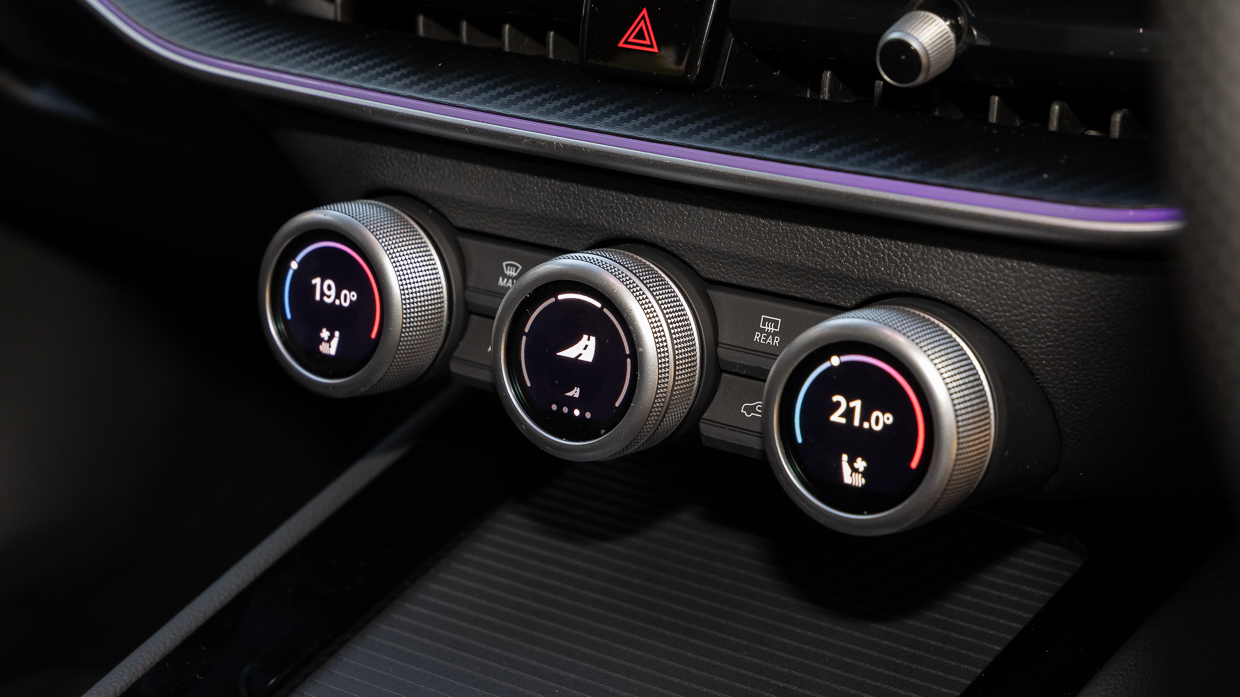
The only shame is that the tactility of the dials isn’t better — with rough edges and a loose feeling. The vent controls are also a bit short of quality, though switchgear elsewhere is of a good standard.
A long rear door accesses a rear seat that offers pseudo-limo amounts of legroom, foot space and headroom. Elongated door glass provides an excellent side view.
Rear-seat pampering doesn’t stop there. A standard ‘Night package’ brings a blankie (with its own felt pouch) and headrests with pull down ‘wings’ for resting your head against when you fancy a snooze. There are manual side blinds, too.
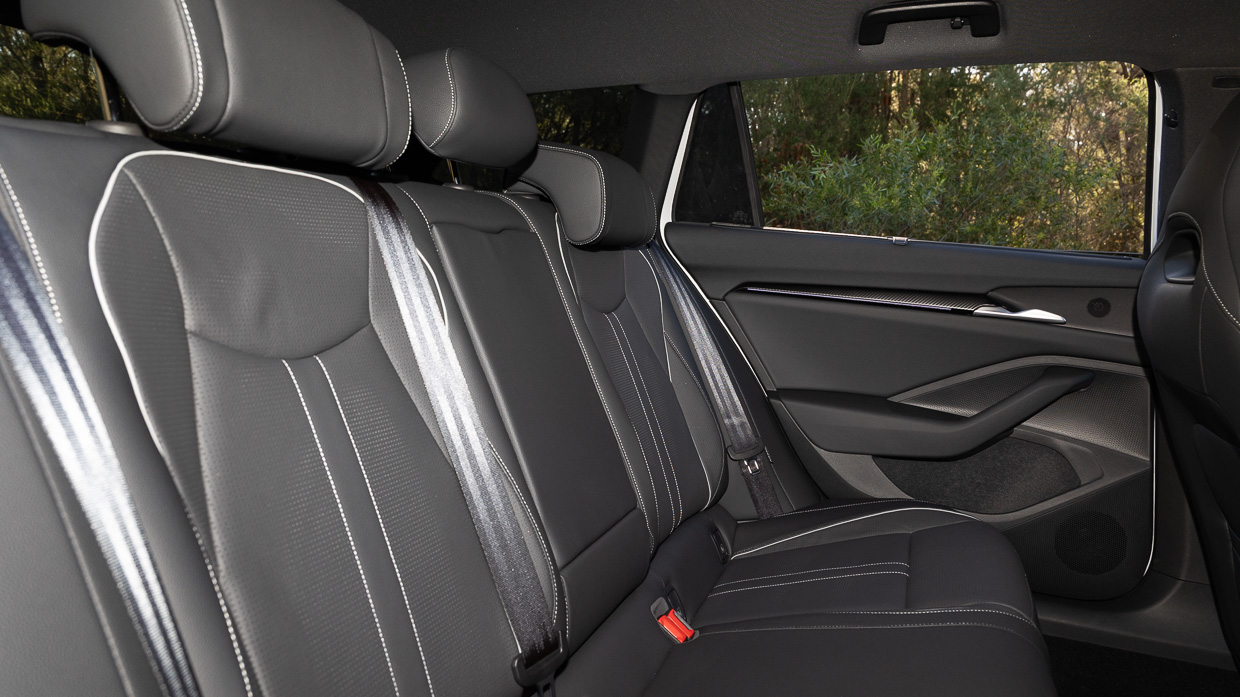
The centre armrest, in addition to cupholders, features a flip-out tablet-device holder, and the armrest extends outwards to improve the viewing angle.
A rear console panel features dedicated temp control for the rear seat as well as activation buttons for outboard seat heating.
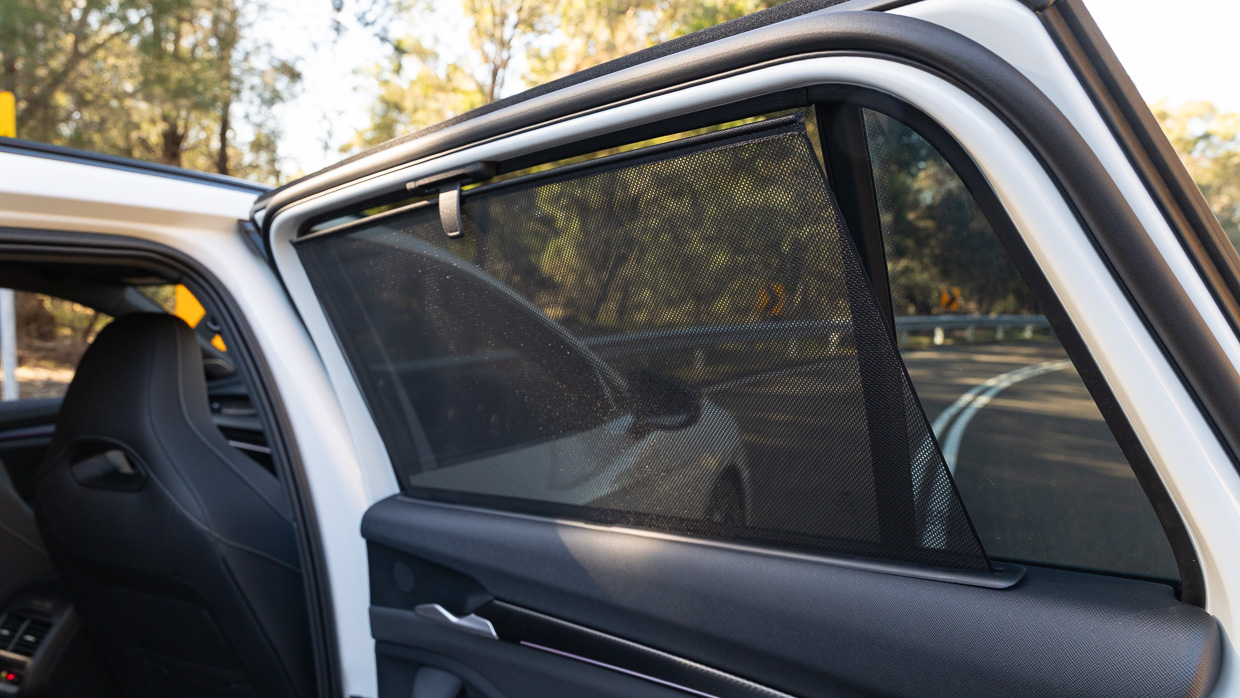
There’s also more USB-C ports back here, plus double pouches in each of the front seatbacks.
A chunky transmission tunnel just limits comfort for any adult forced into the centre middle seat.
Absolutely. And so good that it deserves its own dedicated segment in this review.
The Superb’s extra vehicle length helps improve boot space in the sedan and wagon by between 20 and 30 litres.
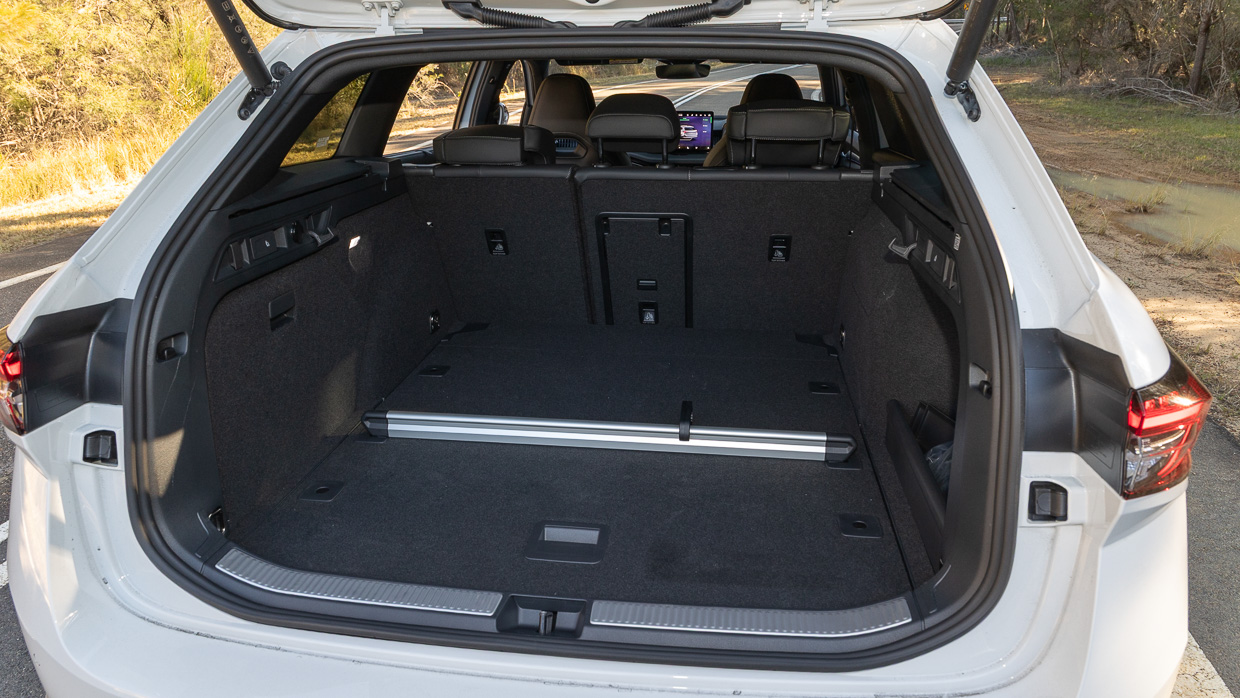
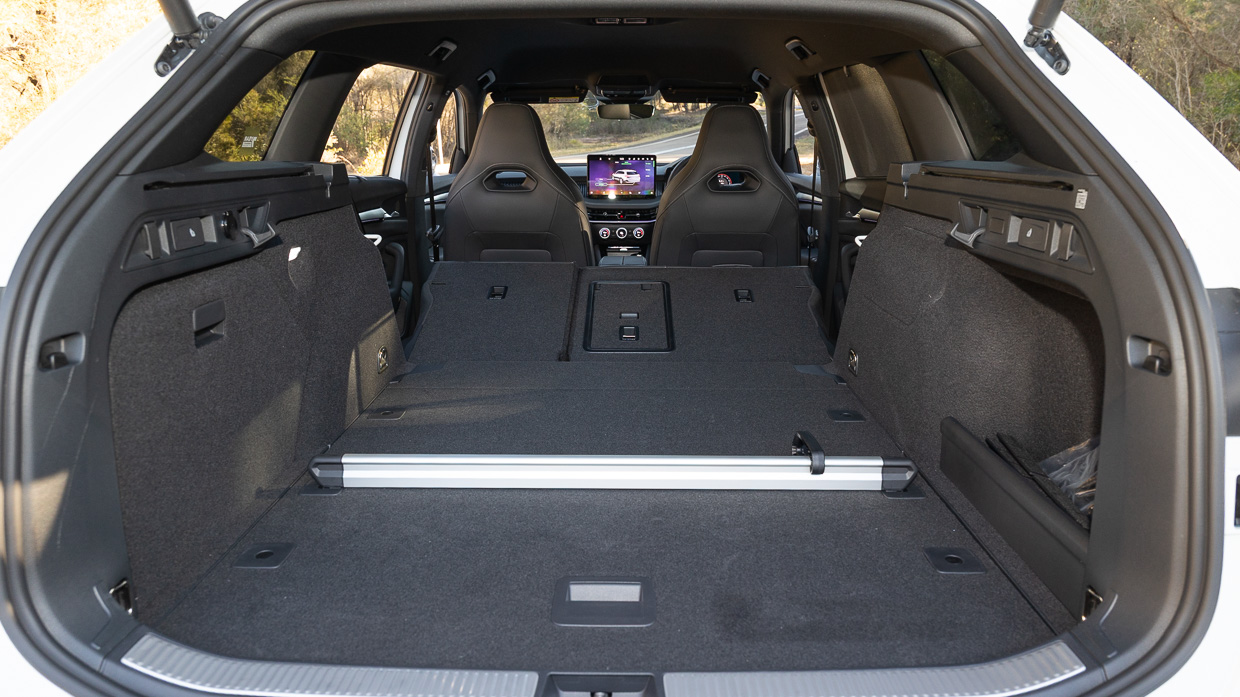
Skoda quotes a 589L capacity for the liftback sedan and 634L for the wagon, extending to 1795L and 1920L respectively with the rear seats folded down.
Focusing on the boot of the wagon we tested, the boot is both voluminous and versatile.
The cargo blind has one-touch retract, and when in place sits flush with the tailgate to ensure possessions remain hidden.
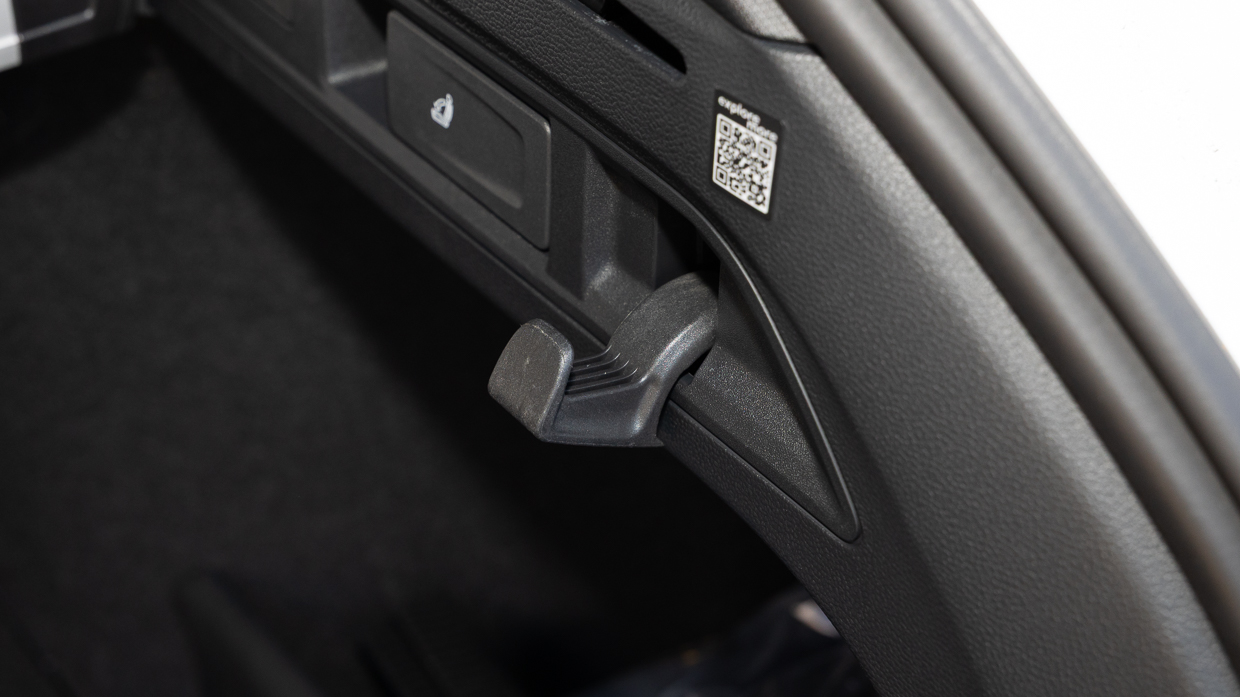
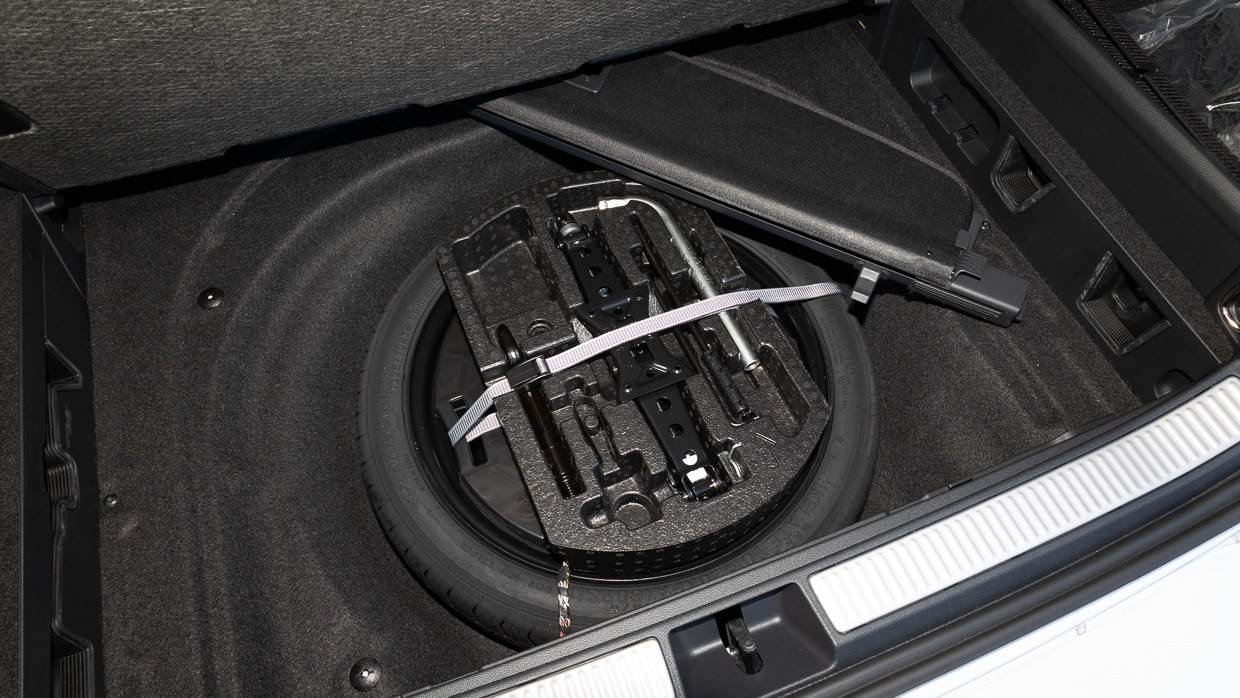
Removing the cargo blind (which can be stored under the boot floor) reveals another bar that can be pulled apart to create a mini storage hammock that can sit over luggage and useful for loose items such as jackets, gloves or beanies.
There’s also an extensive net system, a floor divider that can be moved between three positions, multiple pull-out bag hooks, side storage (covered on the left), and release levers for the rear seatbacks.
Not to mention, there’s also a spare wheel under the floor.
An adaptive suspension featuring dual-valve dampers is standard on the Superb.
The damping can be adjusted via a 15-stage slider on the touchscreen, which might be used once for the Individual driving mode set-up but is otherwise rather pointless when the driver can cycle through driving modes via the central ‘smart dial’.

During our week with the Superb, we tended to switch between just two driving modes: Comfort and Sport.
While the Superb’s ride isn’t ultra-plush around town, not quite fully absorbing the sharpest bumps, it is generally settled — and that delivers more than sufficient comfort for everyday driving.
The suspension is at its most relaxed in Comfort mode on freeways, which contributed to an enjoyable three-hour drive from Canberra to Sydney as part of testing.
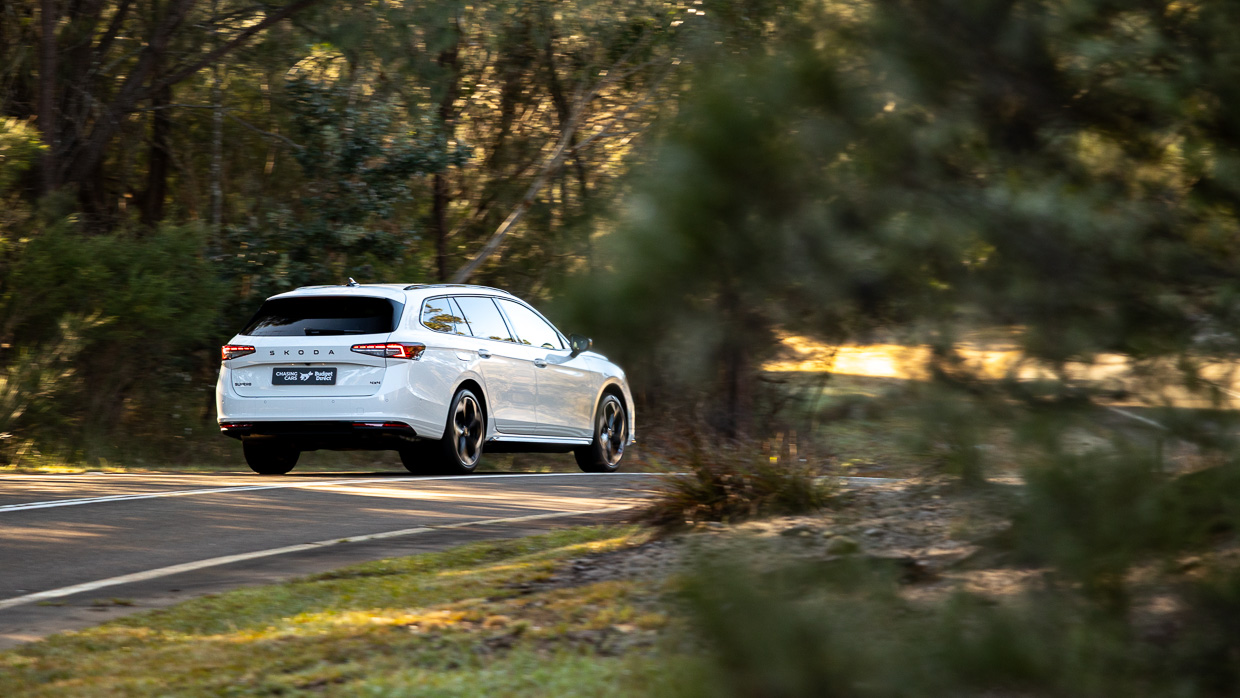
Cabin refinement is terrific at high speeds, too — the engine is unobtrusive and there’s minimal wind noise. The latter is aided by a slippery body shape with a 0.25 coefficient of drag (Cd); the sedan cuts through the air even more effectively with a 0.23Cd.
We sampled two Superbs wearing different rubber — Pirelli Cinturo and Goodyear Eagle F1 — and in both cases tyre rumble was at its most pronounced on coarse-chip country roads.
Engage Travel Assist via a steering wheel button and the Superb will guide itself along freeway lanes. As with similar systems, it won’t let you keep your hands off the wheel for too long though unlike some semi-autonomous steering set-ups it will allow you to rest your hands loosely on the steering wheel.
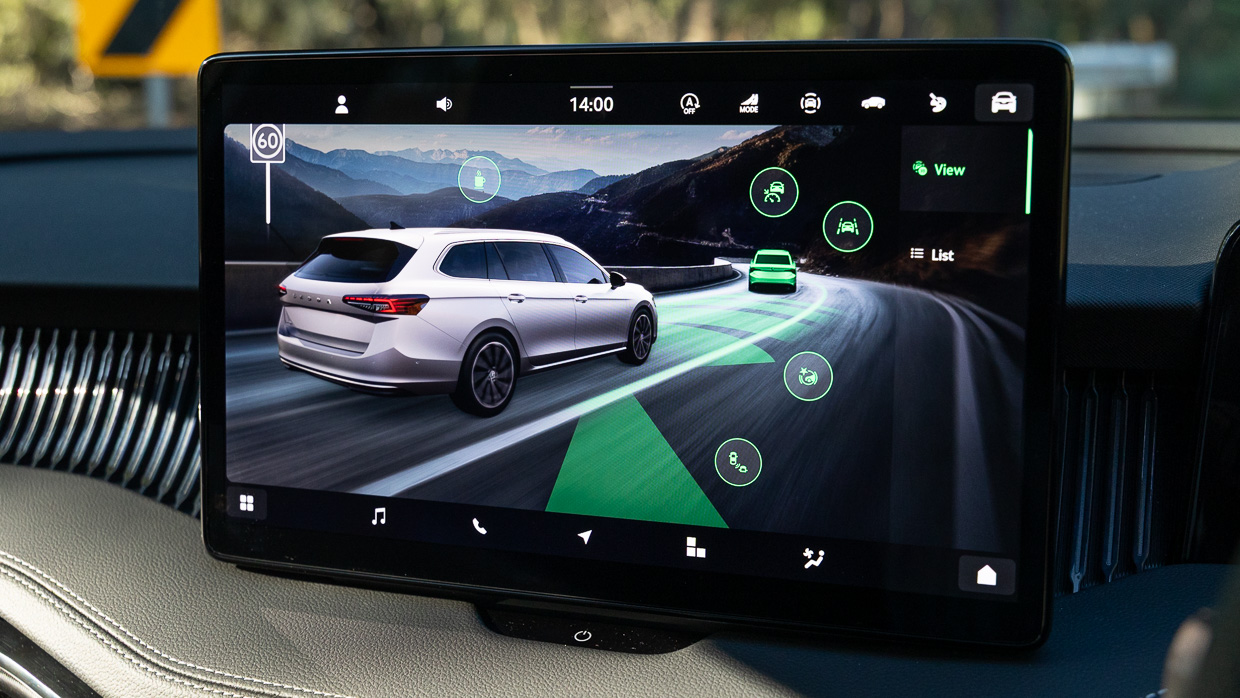
Select Sport mode and the big Skoda tightens up its body control to bring dynamics that are highly competent on twisting country roads and backed by strong tyre grip, and all-wheel-drive traction out of corners.
Handling is biased towards understeer but it’s predictable and also adjustable with a lift of the throttle.
There’s a willing partner under the bonnet, too. While Superbs of recent years have featured a detuned VW Golf R engine, this time the Skoda borrows from the Golf GTI hot-hatch.
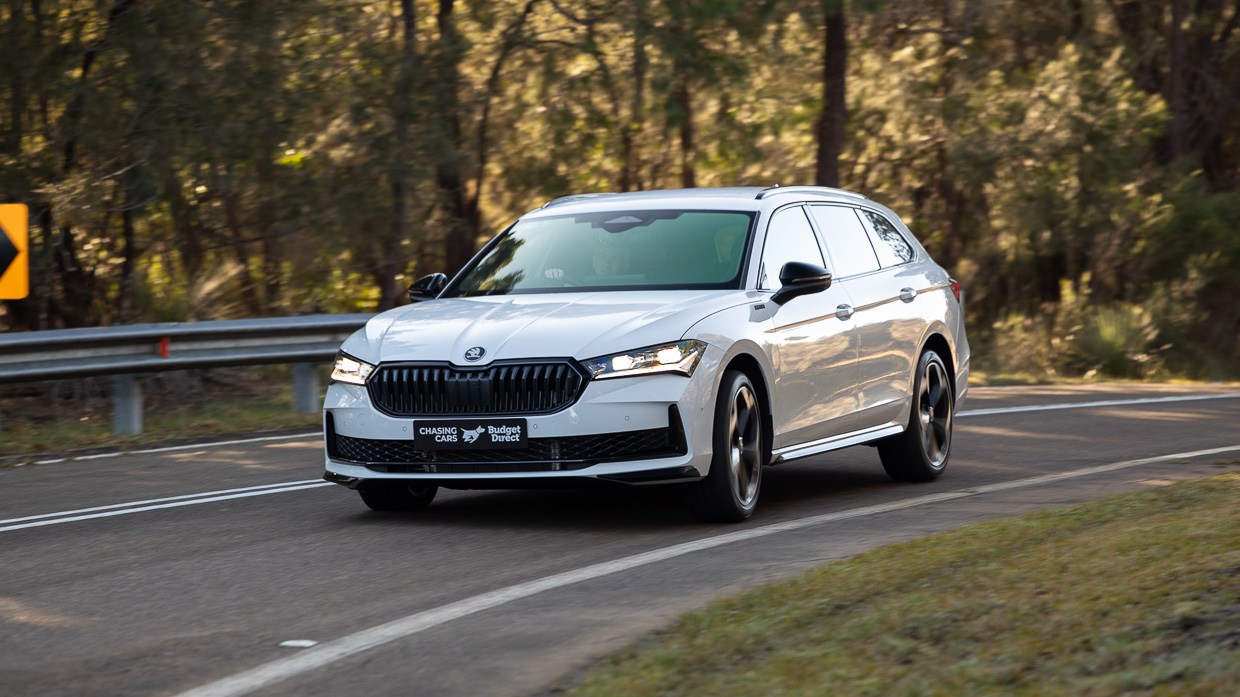
While this sees power drop from 206kW to 195kW, torque increases from 350 to 400Nm to boost driveability. (This is also 30Nm more than offered by the 2.0-litre turbo petrol in the GTI as well as Skoda’s Octavia RS.)
A switch from the older ‘DQ250’ six-speed DSG to newer seven-speed dual-clutch improves drivability. The seven-speed DSG can still have its moments of slight hesitation when asking for some hurried acceleration, though it’s a minor vice that’s no deal-breaker.
There are paddle levers for pseudo-manual gearchanges, which are worthwhile to enjoy the drivetrain at its sharpest.
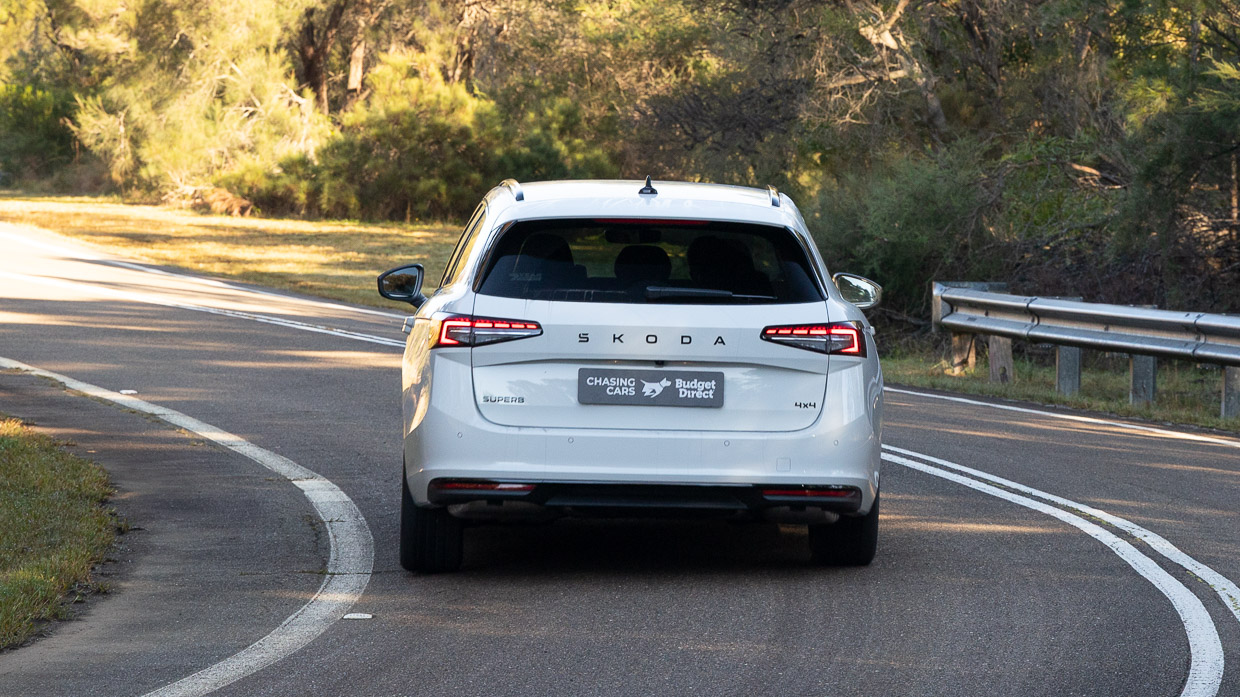
In everyday driving, the Superb’s throttle response is excellent even in the more passive Comfort driving mode.
The Superb comes with a faster 0-100km/h claim of 5.6 seconds (sedan) or 5.7 seconds (wagon), both a few-tenths quicker than their respective predecessors. More importantly for normal driving, the Skoda has plenty of in-gear thrust for quick overtakes.
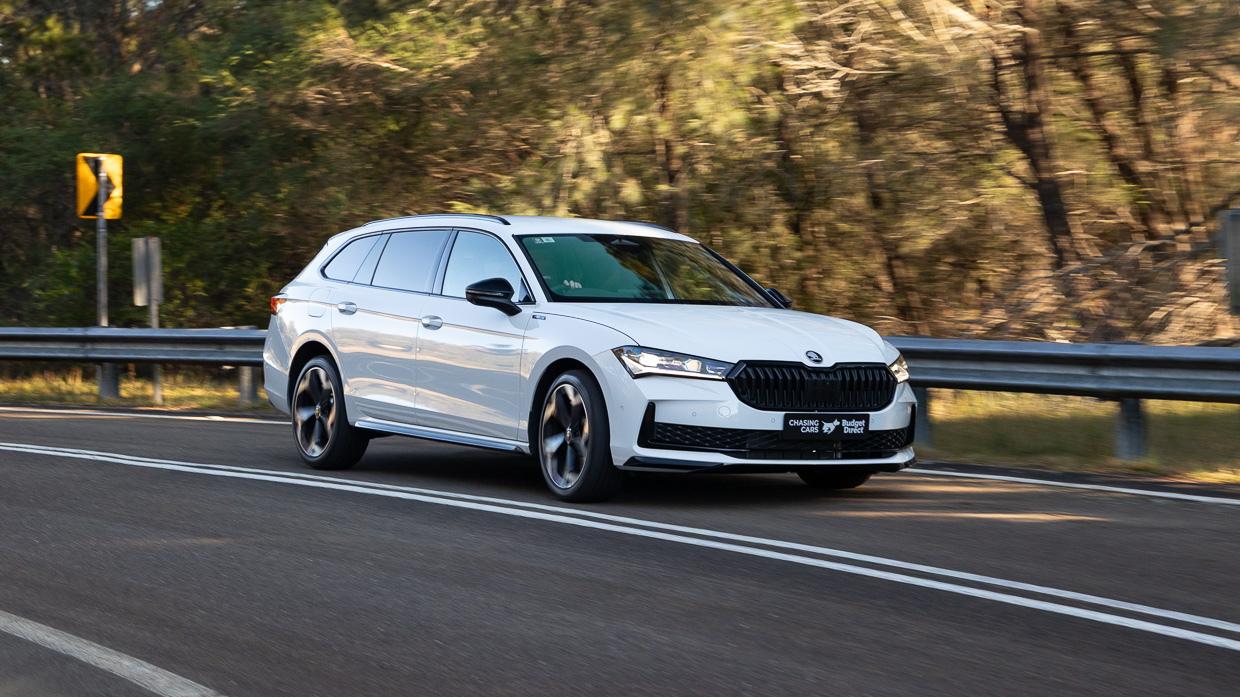
Interestingly, the Superb’s body has narrowed by 15mm — opposing the trend for wider cars. That all helps on narrow streets, though generally this 4.9-metre-long car doesn’t feel huge on the road. The turning circle (11.1 metres) is also good for a car of this length.
The wagon offers particularly excellent rear-view vision.
The Superb has yet to be crash-tested by ANCAP locally, though the car was given five stars (with high sub-category scores) by Euro NCAP based on testing on its structurally identical twin, the VW Passat.
Previous Superbs were given maximum ratings by ANCAP and there’s no obvious reason the latest model wouldn’t follow suit.
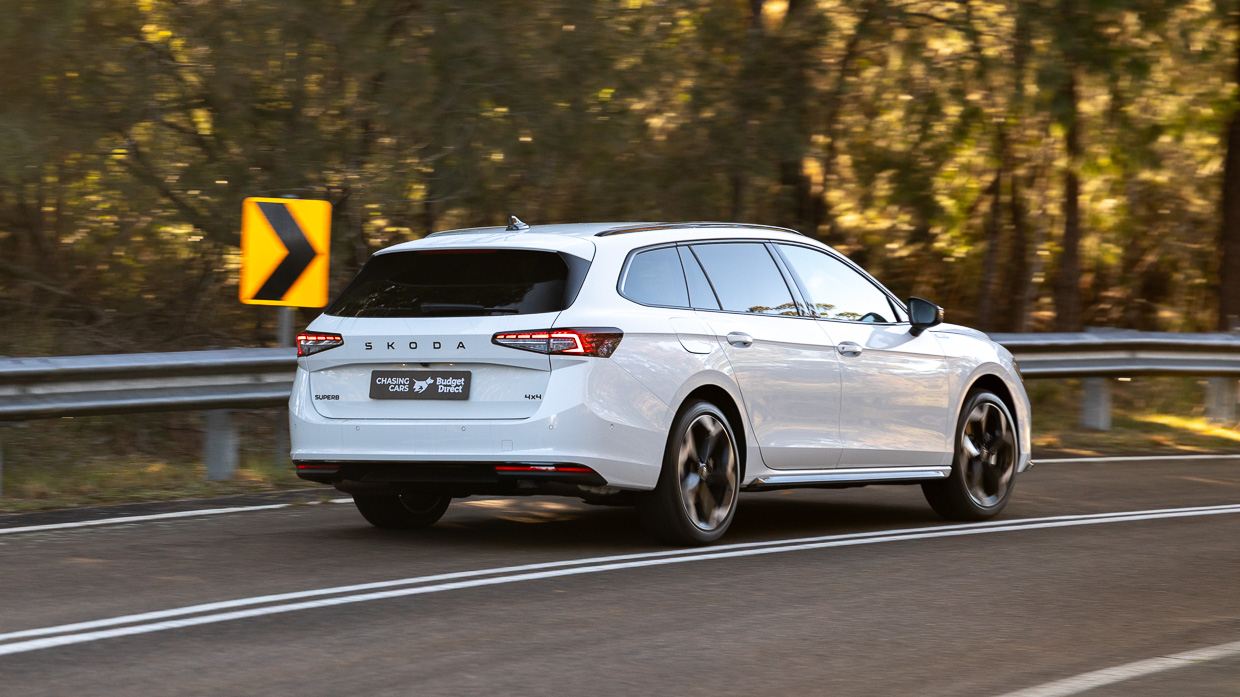
Standard safety inclusions for the Skoda Superb are:
Skoda’s factory warranty is seven years, two years longer than the industry average.
A first year service costs $473, or Superb buyers can opt for pre-paid service packs — $3000 for five years or $3700 for seven years. That works out at $600 or $529 per year, respectively. Service intervals for the Superb are every 12 months or 15,000km.
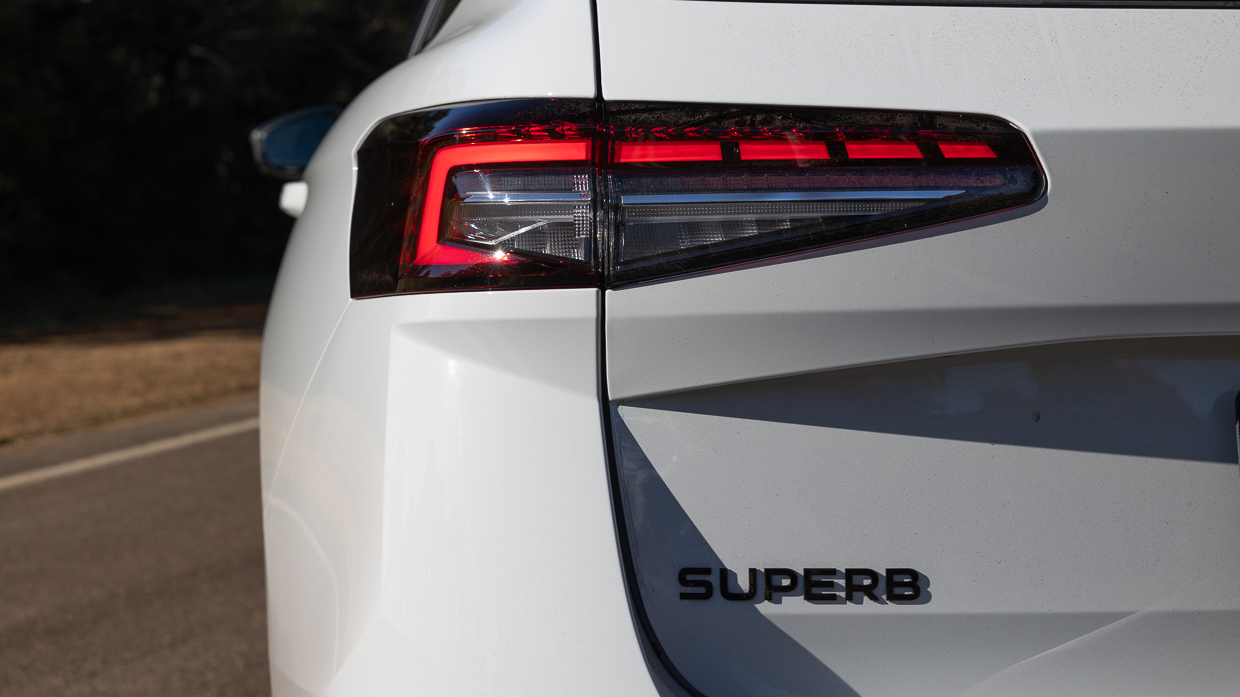
For comparison, a Lexus ES costs $595 per annual visit and a Honda Accord is just $199 annually for up to five years.
Official fuel consumption has improved slightly from the previous model — down to 7.7 litres per 100km for the sedan or 7.8L/100km for the wagon. How close owners get to those figures in the real world will depend on how often they jump on freeways.
We averaged 6.5L/100km on a drive from Canberra to Sydney (after some spirited steering), but, after refueling a trip computer reset this increased to 11.2L/100km after a couple of days of daily commuting.
The Superb is arguably the world’s most boldly badged car. Yet while previous models have been merely good — save for the wonderful Scout — this fourth-generation model has never been closer to living up to the name.
There are some niggles such as the urban fuel consumption, some interior/switchgear quality glitches, and servicing costs that are a touch on the high side.
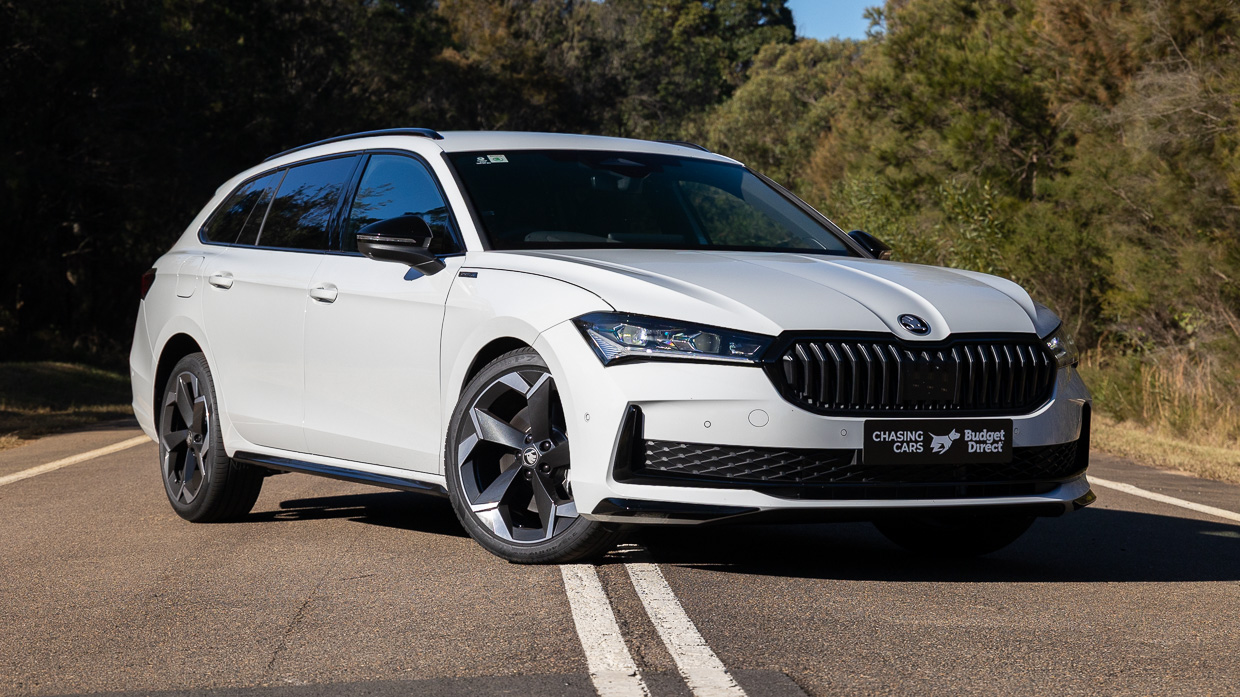
Overall, though, the Skoda Superb is ridiculously easy to recommend for any buyers willing to forgo an SUV for a less trendy large car. It’s stacked with kit as well as surprise-and-delight features, it’s incredibly spacious inside including its voluminous and versatile boot, and it’s a mostly refined driving experience.
And, to be fair, Skoda Excellent doesn’t quite have the same ring to it.
About Chasing cars
Chasing Cars reviews are 100% independent.
Because we are powered by Budget Direct Insurance, we don’t receive advertising or sales revenue from car manufacturers.
We’re truly independent – giving you Australia’s best car reviews.
The estimate provided does not take into account your personal circumstances but is intended to give a general indication of the cost of insurance, in order to obtain a complete quote, please visit www.budgetdirect.com.au. Estimate includes 15%^ online discount.
^Conditions Apply
Budget Direct Insurance arranged by Auto & General Services Pty Ltd ACN 003 617 909(AGS) AFSL 241 411, for and on behalf of the insurer, Auto & General Insurance Company Limited(ABN 42 111 586 353, AFSL 285 571).Because we don’t know your financial needs, we can’t advise you if this insurance will suit you. You should consider your needs and the Product Disclosure Statement before making a decision to buy insurance. Terms and conditions apply.
Indicative quote based on assumptions including postcode , 40 year old male with no offences, licence suspensions or claims in the last 5 years, a NCD Rating 1 and no younger drivers listed. White car, driven up to 10,000kms a year, unfinanced, with no modifications, factory options and/or non-standard accessories, private use only and garaged at night.
^Online Discounts Terms & Conditions
1. Discounts apply to the premium paid for a new Budget Direct Gold Comprehensive Car Insurance, Third Party Property Only or Third Party Property, Fire & Theft Insurance policy initiated online on or after 29 March 2017. Discounts do not apply to optional Roadside Assistance.
2. Discounts do not apply to any renewal offer of insurance.
3. Discounts only apply to the insurance portion of the premium. Discounts are applied before government charges, taxes, levies and fees, including instalment processing fees (as applicable). The full extent of discounts may therefore be impacted.
4. We reserve the right to change the offer without notice.